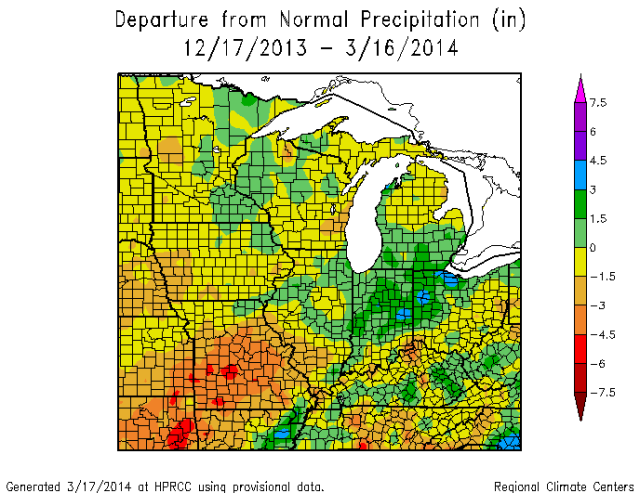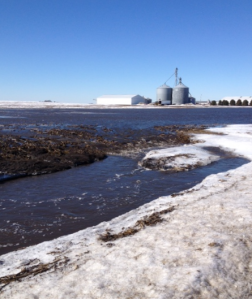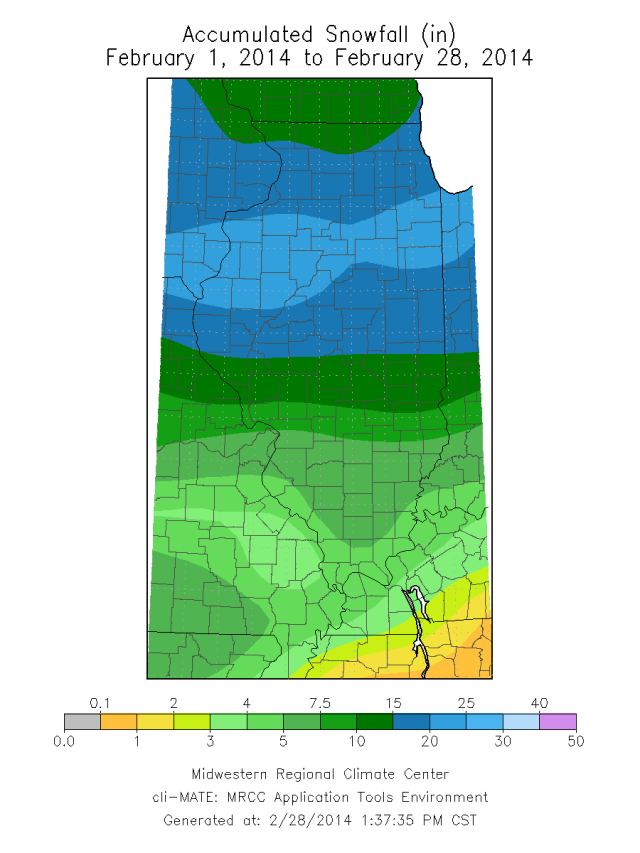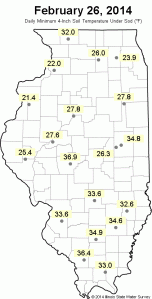Winter’s grip on Illinois is slowly releasing. However, we remain cold and dry for March. The statewide average temperature for March 1-16, 2014, was 30.3 degrees, which is almost 8 degrees below average. The good news is that the average, or normal, temperatures are climbing rapidly through the month. As a result, being 8 degrees below average in mid-March is still warmer than this winter. The NWS Climate Prediction Center 6-10 and 8-14 day forecasts show the below-average temperatures to continue through the end of March.
Besides the cooler temperatures, another concern at this point is the below-average precipitation (in shades of yellow and orange) for March so far. This is true not only across Illinois but much of the Midwest.

Below are the 90-day precipitation departures from average. Above-average precipitation (shaded in green) can be found in IL, IN, OH, and MI, due for the most part to our generous snows and a few rain events. However, parts of southeastern IL are 1.5 to 3 inches below average. This is part of a larger area of dryness covering Missouri and parts of KS, OK, and AR. Of course this pattern could change quickly as we get out of winter and into spring. A few good spring rains could erase most of this deficit. In the meantime, we will be watching this area closely.












